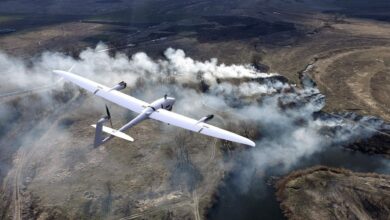Israel’s Laser Defense to Intercept Missiles Within Year: PM
Israel’s new missile interception technology, designed to surround the country with “a defensive laser wall,” will be ready within a year, Prime Minister Naftali Bennett has announced.
The Israel Defense Forces will begin using the weapon system in 2023. The technology is expected to reduce the high costs currently incurred shooting down aerial threats.
“This will allow us, in the medium- to long-term, to surround Israel with a laser wall that will defend us from missiles, rockets, UAVs [unmanned aerial vehicles] and other threats that will essentially take away the strongest card our enemies have against us,” Naftali Bennett said during a speech at the Institute for National Security Studies in Tel Aviv.
In June last year, the missile interception technology intercepted drones while installed on a light aircraft. It detected several drones within a range of a kilometer (0.62 miles) with precision.
However, the ministry intends to develop the laser with 100 kilowatts of power, which will detect UAVs with an effective range of 20 kilometers (12.42 miles). The prime minister also said that Israel would offer laser technology to its regional allies.
Israel’s Range of Missile Interceptors
Israel already has three defense systems — Iron Dome, David’s Sling, and Arrow – each providing defense against rockets and missiles of different sizes and ranges.
Iron Dome, which was deployed against strikes from Gaza, is an effective, truck-towed, multi-mission mobile defense system.
It can intercept short-range rockets such as the Qassams and Katyushas fired by Hamas and Hezbollah and operates in all weather conditions. The Iron Dome has a range of up to 70 kilometers (43.49 miles) and can be strategically placed to reduce collateral damage.

The country’s David’s Sling missile defense system can defeat short-range ballistic missiles, high-accuracy missiles, and large-caliber rockets such as Hezbollah’s M-600. The weapon, co-developed with the United States, can intercept ballistic and cruise missiles from 40 to 300 kilometers (25-185 miles) away.
The Arrow provides defense against long-range missiles like Scud missiles from Syria or Shihab missiles from Iran. It is considered to have a detection range of 500 kilometers (310.68 miles) and can intercept targets up to a range of 100 km (62.13 miles) and an altitude of 50 kilometers (31 miles).
Arrow 3 and Arrow 4 Anti-Ballistic Missile System
In January, Israel tested its Arrow 3 anti-ballistic missile system, designed to intercept a missile outside the Earth’s atmosphere, the country’s defense ministry said.
The missile system is currently the country’s most advanced long-range missile defense system, developed to destroy projectiles and accompanying nuclear, chemical, or biological warheads. Researchers are currently working on the more advanced Arrow 4.












